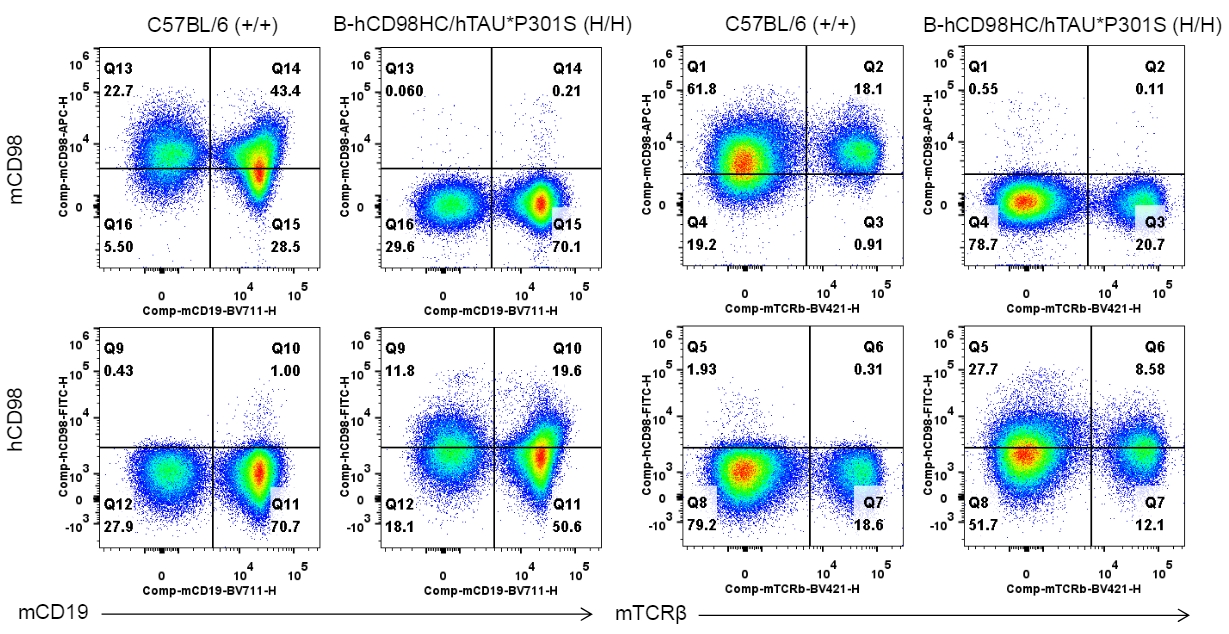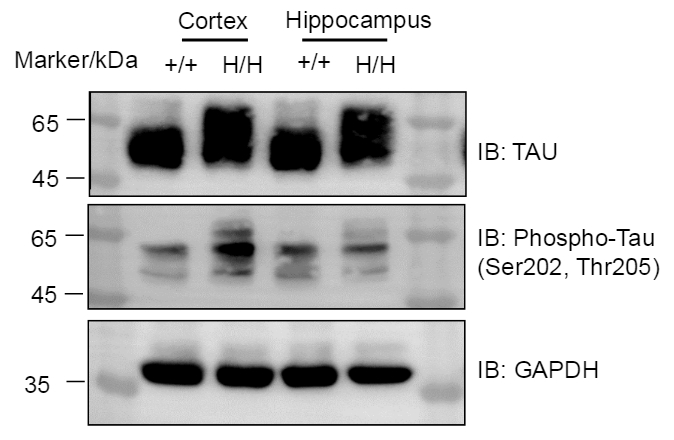


C57BL/6-Slc3a2tm1(SLC3A2)Bcgen Mapttm1(MAPT*P301S)Bcgen/Bcgen • 113206

| Product name | B-hCD98HC/hTAU*P301S mice |
|---|---|
| Catalog number | 113206 |
| Strain name | C57BL/6-Slc3a2tm1(SLC3A2)Bcgen Mapttm1(MAPT*P301S)Bcgen/Bcgen |
| Strain background | C57BL/6 |
| NCBI gene ID | 6520, 4137 (Human) |
| Aliases | 4F2, 4F2HC, 4T2HC, CD98, CD98HC, MDU1, NACAE; TAU, MSTD, PPND, DDPAC, MAPTL, MTBT1, MTBT2, tau-40, FTDP-17, PPP1R103, Tau-PHF6 |
Gene targeting strategy for B-hCD98HC/hTAU*P301S mice.
The full coding sequences of human TAU gene with P301S mutation that is driven by mouse Prnp promoter are inserted into mouse Hipp11 (H11) locus in B-hCD98HC/hTAU*P301S mice. The exons 2-10 of mouse Cd98 gene that encode the extracellular domain were replaced by human CD98 exons 4-12 in B-hCD98HC/hTAU*P301S mice.

Strain specific CD98 expression analysis in homozygous B-hCD98HC/hTAU*P301S mice by flow cytometry. Splenocytes were collected from wild-type C57BL/6 mice (+/+) and homozygous B-hCD98HC/hTAU*P301S mice (H/H), and analyzed by flow cytometry with anti-mouse CD98 antibody (Biolegend, 128211) and anti-human CD98HC antibody (Biolegend, 315603). Mouse CD98 was detectable in B cells and T cells form wild-type mice. Human CD98HC was exclusively detectable in B cells and T cells from homozygous B-hCD98HC/hTAU*P301S mice but not in wild-type mice.

Western blot analysis of phosphorylation of TAU protein expression in homozygous B-hCD98HC/hTAU*P301S mice. Cortex and hippocampus lysates were collected from wild-type C57BL/6 mice (+/+) and homozygous B-hCD98HC/hTAU*P301S mice (H/H, 6-week-old mice), and then analyzed by western blot (Phospho-Tau (Ser202, Thr205) antibody: Invitrogen, MN1020; anti-TAU antibody: CST, #46687). 40 μg total proteins were loaded for western blotting analysis. TAU and p-tau were detected in cortex and hippocampus of both wild-type and homozygous mice.